Steve Bull's Blog, page 1296
October 3, 2017
Welfare Kings? Study Finds Half of New Oil Production Unprofitable Without Government Handouts
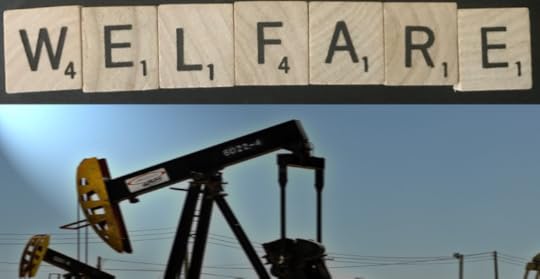
A new study published in the peer-reviewed journal Nature Energy found that 50 percent of new oil production in America would be unprofitable if not for government subsidies. The study, performed by researchers at the Stockholm Environment Institute and Earth Track, Inc., found that, at prices of $50 per barrel, light oil produced by hydraulic fracturing (“fracking”) was heavily dependent on subsidies.
In fact, forty percent of the Permian basin in Texas would be economically unviable without subsidies, and for the home of Bakken crude production, Williston Basin, that number jumps to 59 percent, according to the researchers.
In addition, the study highlights what this additional fossil fuel production means for impacts to the climate:
“…continued subsidies for oil investment could produce oil (and associated gas) that, once burned, will yield CO2emissions equivalent to nearly 1 percent of the remaining global carbon budget for all sectors of all economies.”
At current oil prices, perhaps the most effective “keep it in the ground” strategy might be to stop subsidizing oil production.
But what happens with these subsidies when the price of oil is over $100 per barrel, as it was several years ago? The authors of the study report that, under such a scenario, government subsidies are simply “transfer payments” to oil investors. The oil would be profitable without the subsidies, which become, at that point, simply free cash for investors.
While this study provides valuable insight into how subsidies affect oil production and the climate, it notes that its conclusions are not unique. The authors point out: “As others have found regardless of the oil price, the majority of taxpayer resources provided to the industry end up as company profits.”
…click on the above link to read the rest of the article…
Spanish Showdown: Catalonia To Declare Independence “In Days” Puidgemont Says Despite King’s Condemnation
As reported previously, in a sternly worded address to the nation, Spain’s King Felipe VI condemned organizers of Catalonia’s independence referendum for having put themselves “outside the law” and said the situation in Spain was “extremely serious”, calling for unity. In his address, King Felipe VI said Catalan leaders who organized the referendum showed their “disrespect to the powers of the state” adding that “they have broken the democratic principles of the rule of law.
“Today, the Catalan society is fractured,” the king said, warning that the poll could put at risk the economy of the wealthy autonomous north-eastern region and the whole of Spain. He said that Catalonia’s authorities, “have placed themselves outside the law and democracy, they have tried to break the unity of Spain and national sovereignty”. Offering firm backing to the Spanish government of Mariano Rajoy, Felipe said it was the “responsibility of the legitimate powers of the state to ensure the constitutional order.”
Felipe also said the Catalan government had “systematically violated the law, demonstrating a disloyalty that is inadmissible” and “undermined the harmony and coexistence in Catalan society”
But he stressed that Spain “will overcome difficult times”.
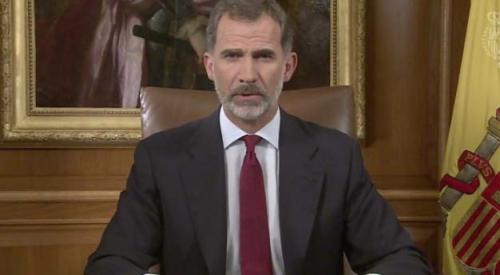
The address came on the same day as Barcelona’s roadways were blockaded amid a general strike as hundreds of thousands in Catalonia have been protesting over Spanish police violence during Sunday’s vote, in which nearly 900 people were hurt.
However, despite the King’s warning and hinting that a showdown, potentially violent, is coming, Catalan President Carles Puigdemont the region will declare independence in a matter of days. In his first interview since the referendum, Carles Puigdemont said his government would “act at the end of this week or the beginning of next”.
…click on the above link to read the rest of the article…
America Not Immune from Chaos
“Exceptional” America views itself as largely immune from devastating storms and the violence that infect much of the world, but recent weeks show that there is no protection against natural and human catastrophes, writes Ann Wright.
Over the past two months – between natural disasters and the actions of a heavily armed gunman firing from a high-rise hotel – citizens of the United States have faced the kind of havoc and violence that people in other parts of the world have been enduring routinely.
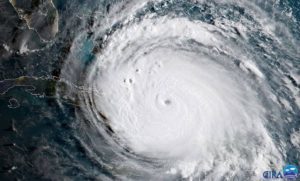
Hurricane Irma as seen from space. (NASA photo)
Sunday night’s mass shooting in Las Vegas killed 59 and left more than 500 wounded. In previous weeks, American citizens have faced loss of life and massive property damage in Puerto Rico, Florida, Texas, and the U.S. Virgin Islands from Hurricanes Maria, Irma and Harvey.
Of course, other places in the Caribbean suffered their own devastating blows from these major hurricanes: Cuba, Barbuda, Dominica, Antigua, British Virgin Islands, Turks and Caicos, British Virgin Island, St. Martin, Monserrat, Guadaloupe, St. Kitts and Nevis.
In other parts of the world, one-third of Bangladesh has been under water from monsoon rains; parts of Nigeria have been flooded; Mexico has endured killer earthquakes.
And then there is the politically driven violence, such as is occurring in Burma/Myanmar with Rahingya villages burned, thousands murdered, and over 400,000 people fleeing into Bangladesh to escape Buddhist Burmese/Myanmar military attacks.
There is also the seemingly endless devastation from wars waged or encouraged by U.S. policymakers. People in Afghanistan have been enduring war and destruction for 16 years; in Iraq for 13 years; and in Syria for five years.
Afghan, Pakistani, Somali, Iraqi, Syrian and Yemeni civilians have been murdered by U.S. killer drones whose pilots, ironically, are trained 60 miles from Las Vegas, raining hellfire missiles from above in the same sort of sudden violence as people in Las Vegas suffered Sunday night.
…click on the above link to read the rest of the article…
What Did Washington Achieve in its Six Year War on Syria?
Now that the defeat of ISIS in Syria appears imminent, with the Syrian army clearing out some of the last ISIS strongholds in the east, Washington’s interventionists are searching for new excuses to maintain the illegal US military presence in the country. Their original rationale for intervention has long been exposed as another lie.Remember that President Obama initially involved the US military in Iraq and Syria to “prevent genocide” of the Yazidis and promised the operation would not drift into US “boots on the ground.” That was three years ago and the US military became steadily more involved while Congress continued to dodge its Constitutional obligations. The US even built military bases in Syria despite having no permission to do so! Imagine if Syria started building military bases here in the US against our wishes.
After six years of war the Syrian government has nearly defeated ISIS and al-Qaeda and the US-backed “moderates” turned out to be either Islamist extremists or Kurdish soldiers for hire. According to a recent report, the US has shipped two billion dollars worth of weapons to fighters in Syria via eastern Europe. Much of these weapons ended up in the hands of ISIS directly, or indirectly through “moderates” taking their weapons with them while joining ISIS or al-Qaeda.
“Assad must go,” proclaimed President Obama back in 2011, as he claimed that the Syrian leader was committing genocide against his own people and that regime change was the only way to save Syrians. Then earlier this year, when eastern Aleppo was about to be liberated by the Syrian government, the neocons warned that Assad would move in and kill all the inhabitants. They warned that the population of eastern Aleppo would flee from the Syrian army. But something very different happened. According to the UN’s International Organization for Migration, 600,000 refugees returned to Syria by August.
…click on the above link to read the rest of the article…
The Theory of Non-Linear Intervention

Economics is well known for rather unrealistic theories based upon fundamentally unsound principles, such as the assumption that all things remain equal. Reality parts with academics whenever such assumptions are drawn to a foregone conclusion. However, greater false assumptions, which go unnoticed, lie at the foundation of so many theories in economics – primarily the assumption of linearity.
In our thinking process, we all are trapped by the Aristotelian sequence of logic – if X takes place then Y must follow. Unfortunately, we think in a linear fashion and, as such, most theories seek to embellish this very basic assumption. The financial world honestly wants to believe in simplistic notions. Raise interest rates and demand will subside along with inflation is but one false linear assumption. Man prefers to believe in linear relationships and systems, because anything beyond two variables becomes far too complex for rational thought processes.
Man’s natural tendency toward linear thinking has indeed created many heated battles. The arguments between supply and demand-side economics is one such example. Given the assumption of a linear economy, demand-side economists argue that the economy can be controlled through the manipulation of government spending and interest rates. In effect, demand-side economics seeks to use the consumer (demand) as a club to beat capital over the head. Yet these same demand-side economists claim that supply-side economics benefits the rich at the expense of the poor. Strangely enough, throwing the consumer out of work and causing higher unemployment to affect lower demand is the core of demand-side economics. It is hard to see how demand-side benefits the poor at the expense of the rich. The supply-side economist argues that there should be less government intervention in demand. Instead, government should stimulate the economy through encouraging greater output through supply stimulation.
…click on the above link to read the rest of the article…
“Total Stoppage”: Barcelona Paralyzed By General Strike, Barricades As Protesters Take To The Streets
The Catalan rebellion escalated on Tuesday, resulting in a day of “total stoppage” for the Catalan capital, in which Barcelona metro stations were closed, pickets blocked main roads and civil servants walked out on Tuesday in response to a strike called by pro-independence groups as separatist activists took to the streets of Barcelona to press home their demands for independence after winning an referendum on Sunday which despite a violent crackdown by the Spanish government, saw nearly 90% of the vote cast for splitting away from Madrid.
According to Bloomberg, public transport and shops were closed as demonstrators gathered in the center of the Catalan capital to protest the police violence that marked Sunday’s vote and reinforce their demands for a split with Spain. Photographs showed traffic backed up behind protesters on one of the main highways connecting Catalonia with the rest of Spain. Roads are blocked in 48 places in the region, the Spanish traffic agency said.
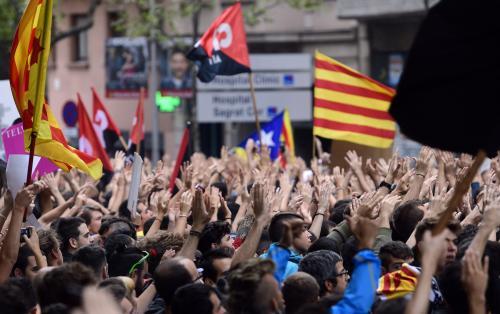
Demonstrators in Barcelona, Oct. 3.
Regional traffic authorities in Catalonia told The Spain Report on Tuesday morning that more than 50 barricades or protests had blocked roads across the region, including major toll roads and motorways used for commercial traffic to and from France.
Normally busy metro stations in Barcelona were deserted as services were cut back sharply, pickets blocked traffic on Gran Via street and traffic on six major highways in the region was disrupted by protests, Reuters reported. Elsewhere, the response to the strike call was patchy with some shops, supermarkets and cafes open and some closed. The Boqueria market in Barcelona was almost empty. Pro-independence groups and trade unions in Catalonia called a general strike for Tuesday after Spanish police forcibly tried to close polling stations on Sunday after a referendum on Catalan independence from Spain was banned by the constitutional court.
…click on the above link to read the rest of the article…
The Biggest Stock Market Crashes Tend to Happen in October
October is the Most Dangerous Month
The prospect of steep market declines worries investors – and the month of October has a particularly bad reputation in this respect.
 Bad juju month: Statistically, October is actually not the worst month on average – but it is home to several of history’s most memorable crashes, including the largest ever one-day decline on Wall Street. A few things worth noting about 1987: 1. the crash did not presage a recession. 2. its extraordinary size was the result of a structural change in the market, as new technology, new trading methods and new hedging strategies were deployed. 3. Bernie (whoever he was/is) got six months.
Bad juju month: Statistically, October is actually not the worst month on average – but it is home to several of history’s most memorable crashes, including the largest ever one-day decline on Wall Street. A few things worth noting about 1987: 1. the crash did not presage a recession. 2. its extraordinary size was the result of a structural change in the market, as new technology, new trading methods and new hedging strategies were deployed. 3. Bernie (whoever he was/is) got six months.
Regarding point 2: in particular, the interplay between program trading and “portfolio insurance” proved deadly (the former describes computerized arbitrage between cash and futures markets, the latter was a hedging strategy very similar to delta-hedging of puts, which involved shorting of S&P futures with the aim of making large equity portfolios impervious to losses – an idea that turned out to be flawed). Too many investors tried to obtain “insurance” by selling index futures at the same time, which pushed S&P futures to a vast discount vs. the spot market. This in turn triggered selling of stocks and concurrent buying of futures by program trading operations – which put more pressure on spot prices and in turn triggered more selling of futures for insurance purposes, and so on. The vicious spiral produced a one-day loss of 22.6% – today this would be equivalent to a DJIA decline of almost 5,000 points. Due to circuit breakers introduced after 1987, very big declines will lead to temporary trading halts nowadays (since 2013 the staggered threshold levels are declines of 7%, 13% and 20%; after 3:25 pm EST the market is allowed to misbehave as it sees fit). Interestingly, program trading curbs were scrapped again.
…click on the above link to read the rest of the article…
October 2, 2017
Nobody knows what will happen
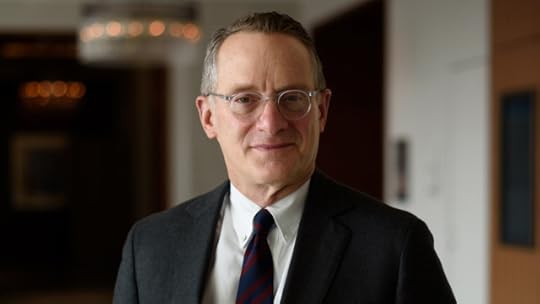
Howard Marks, Co-Founder of Oaktree Capital. (Bild: Akio Kon/Bloomberg via Getty Images)
Howard Marks, Co-Chairman of the US investment firm Oaktree Capital warns that valuations in the financial markets are uncomfortably high and that investors are acting too complacent.
When Howard Marks speaks, financial markets listen. The renowned value investor and co-founder of Oaktree Capital looks back at almost fifty years on Wall Street and has seen a thing or two during his successful career. His «Memos from the Chairman», which he sends sporadically to Oaktree’s clients are a must read for investors.
About Howard Marks
Howard Marks is the co-chairman and a co-founder of the investment firm Oaktree Capital which specializes in distressed debt and has around 100 bn $ of assets under management. He is a true grandmaster when it comes to investment philosophy. In his insightful book named «The Most Important Thing» he explains the keys to successful investment and the pitfalls that can destroy capital or ruin a career. His legendary memos to Oaktree clients are a must read for financial professionals. «When I see memos from Howard Marks in my mail, they’re the first thing I open and read. I always learn something», says none other than Warren Buffet.
Before founding Oaktree in 1995, Mr. Marks led the groups at the asset manager TCW that were responsible for investments in distressed debt, high yield bonds and convertible securities. He was also Chief Investment Officer for Domestic Fixed Income at TCW. Previously, he was with Citicorp Investment Management for 16 years, where from 1978 to 1985 he was Vice President and senior portfolio manager in charge of convertible and high yield securities. Between 1969 and 1978, he was an equity research analyst and subsequently, Citicorp’s Director of Research. Mr. Marks holds a B.S.Ec. degree cum laude from the Wharton School of the University of Pennsylvania with a major in finance and an M.B.A. in accounting and marketing from the Booth School of Business of the University of Chicago.
…click on the above link to read the rest of the article…
The Pricing of Risk is Kaput
US Treasury Yield v. Euro “Junk Bond ” Yield. A new record in central-bank engineered absurdity.
US Treasury Securities with longer maturities fell this morning, with the 10-year Treasury yield rising above 2.37% early on and currently trading at 2.34%. This is still low by historical standards, and it’s still in denial of the Fed’s monetary tightening: Four rate hikes since it started this cycle, and the QE unwind has commenced as of today. But it cannot hold a candle to the Draghi-engineered negative-yield absurdity still unfolding in the Eurozone.
The average yield of junk bonds denominated in euros hit a new all-time record low at the close on Friday of 2.30%.
Let that sink in a moment. These euro corporate bonds are rated below investment grade. Companies, unlike the US, cannot print their own money to prevent default. There is little liquidity in the junk bond market, and selling these bonds when push comes to shove can be hard or impossible. The reason they’re called “junk” is because of their high risk of default.
And yet, prices of these junk bonds have been inflated by the ECB’s policies to such a degree that their yield, which falls as prices rise, is now lower than that of 10-year US Treasury securities that are considered the most liquid securities with the least credit risk out there.
The average yield of the euro junk bonds is based on a basket of below-investment-grade corporate bonds denominated in euros. Issuers include junk-rated American companies with European subsidiaries – in which case these bonds are called “reverse Yankees.”
They include the riskiest bonds. Plenty of them will default. Losses will be painful. Investors know this. It’s not a secret. But they don’t mind. They’re institutional investors plowing other people’s money into these bonds, and they don’t need to mind, but they have to buy these bonds because that’s their job.
…click on the above link to read the rest of the article…
In Maria’s Wake, Could Puerto Rico Go Totally Green?
The ecological and humanitarian destruction of Puerto Rico has left the world aghast. But there is a hopeful green-powered opportunity in this disaster that could vastly improve the island’s future while offering the world a critical showcase for a sane energy future.
By all accounts Hurricane Maria has leveled much of the island, and literally left it in the dark. Puerto Rico’s electrical grid has been extensively damaged, with no prospects for a return to conventionally generated and distributed power for months to come.
In response Donald Trump has scolded the island for it’s massive debt, and waited a full week after the storm hit to lift a shipping restriction requiring all incoming goods to be carried on US-flagged ships. (That restriction is largely responsible for the island’s economic problems in the first place.)
The Puerto Rico Electric Power Authority is a state-owned operation that hosts a number of solar and wind farms, as well as a network of hydroelectric dams. But the bulk of its energy supply has come from heavy industrial oil, diesel and gas burners. It also burns coal imported from Colombia at a plant in Guyama.
The fossil burners themselves apparently were left mostly undamaged by Maria. But the delivery system, a traditional network of above-ground poles and wires, has essentially been obliterated. Power authority officials say it could take at least 4-6 months to rebuild that network.
And of course, there is no guaranteeing such a pole-and-wire set-up would not then be obliterated by the next storm.
Among the most serious casualties have been the island’s hospitals. According to reports, 58 of Puerto Rico’s 69 medical facilities have been blacked out. At least two people died when intensive care units went dark.
…click on the above link to read the rest of the article…



